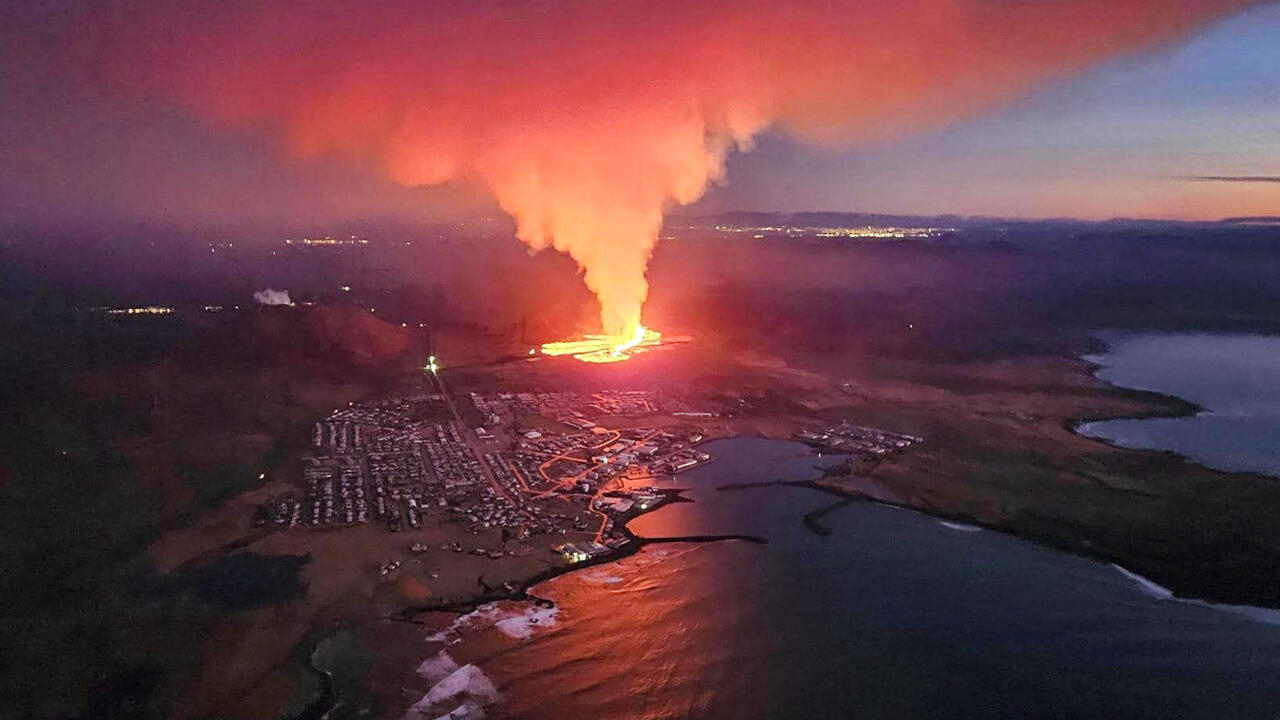A new volcanic eruption sent flames, smoke and lava spewing out near the Icelandic fishing port of Grindavik on Sunday, only hours after villagers were evacuated to safety, authorities said.
Issued on: Modified:
3 min
It was the North Atlantic nation’s fifth volcanic eruption in under three years.
The most recent occurred just weeks ago on December 18 in the same region, southwest of the capital Reykjavik.
The eruption began at 8am on Sunday, the Meteorological Office (IMO) said.
Jets of glowing orange lava flowed out and a huge smoke cloud rose against the sky at sunrise.
“A crack has opened up on both sides of the dykes that have begun to be built north of Grindavik,” the Met Office wrote.
“From measurements from the Icelandic coastguard helicopter, the (lava’s) perimeter is now about 450 metres from the northernmost houses in the town,” it said.
Seismic activity had intensified overnight and the few dozen remaining residents of Grindavik were evacuated around 3am, public broadcaster RUV reported.
“The town had already been successfully evacuated in the night and no lives are in danger,” said President Guoni Johannesson on X, formerly Twitter.
“Infrastructure may be under threat,” he wrote, adding that airline flights had not been affected.
Most of the 4,000-strong population of Grindavik had moved out as a precaution on November 11 after scientists said a tunnel of magma was shifting beneath them.
A series of small earthquakes – sometimes hundreds per day – created large cracks in roads, homes and buildings.
Shortly after the December 18 eruption, residents were allowed to return for brief periods.
They were authorised to regain their homes permanently on December 23 but only a few dozen chose to do so.
Officials are keeping a close eye on the area’s Svartsengi geothermal plant, which provides electricity and water to the 30,000 residents of the Reykjanes peninsula.
Workmen have been building a wall to protect the facility since November.
Until March 2021, the Reykjanes peninsula had not experienced an eruption for eight centuries.
Fresh eruptions occurred in August 2022, and July and December 2023, leading volcanologists to say it was probably the start of a new era of activity in the region.
Four days after the December 18 eruption, authorities said volcanic activity had stopped but they could not declare the eruption over because there was still a possibility of underground lava flow.
Iceland is home to 33 active volcano systems, the highest number in Europe.
It straddles the Mid-Atlantic Ridge, a crack in the ocean floor separating the Eurasian and North American tectonic plates.
(FRANCE 24 with AFP, AP, Reuters)
